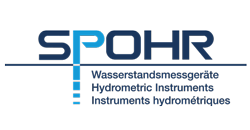Why Multilevels: Provide a Clearer Understanding of Subsurface Conditions
Superior quality of data is captured when monitoring a series of discrete isolated intervals at various depths in a single borehole. The detailed information provided by Multilevels Groundwater Monitoring Systems in the form of horizontal and vertical flow, in conjunction with discrete zone sampling for contaminants, is necessary for accurate site assessments.
- Improve Site Assessments and Risk Management
- Multilevels provide high resolution data for input into more representative conceptual site models.
- Transects of Multilevels across a groundwater flow path provide the best data to use for Mass Flux calculations. This has proven to be an important tool for site assessments that require realistic estimates of maximum contaminant concentration/risk to receptors.
- Optimize performance of in-situ remediation by using detailed 3-D data from a series of Multilevels. Subsequently, transects can be used to evaluate the success of the chosen remediation option and any improvements.
- The Economics Make Sense
- Proven cost reductions for drilling and sediment disposal.
- Field personnel time and disposal costs are low, when purge volumes are reduced. The discrete interval that a Multilevel port encompasses allows for smaller purge volumes, rapid responses to level changes and is ideal for low flow sampling techniques.
- Overcome Biases with Long Screened Wells
- Contaminant mixing over long screens masks vertical variations resulting in underestimating the aerial extent of plumes and diluting the true concentration of contaminants.
- Ambient vertical flow within the well has potential to transmit contaminants to non-contaminated zones.


 German
German English
English